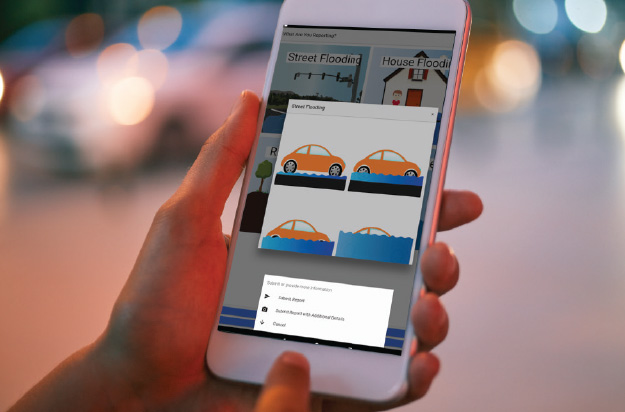Winter 2016: Energy Evolution
From carbon dioxide conversion to landfill mining, researchers at UTA are seeking viable alternative energy options.
Skip to content. Skip to main navigation.
From carbon dioxide conversion to landfill mining, researchers at UTA are seeking viable alternative energy options.
Found in everything from space shuttles to dental fillings, composite materials have thoroughly infiltrated modern society. But their potential is still greatly untapped, offering researchers ample opportunity for discovery.
Within the particle showers created at the Large Hadron Collider, answers to some of the universe’s mysteries are waiting.
Model systems like pigeons can help illuminate our own evolutionary and genomic history.
UT Arlington's tiny windmills are bringing renewable energy to a whole new scale.
The stability of our highways, pipelines, and even manholes is reaching a breaking point.
Scientists believe they have discovered a subatomic particle that is crucial to understanding the universe.
UT Arlington researchers unlock clues to the human body’s most mysterious and complex organ.
UT Arlington researchers probe the hidden world of microbes in search of renewable energy sources.
Wounded soldiers are benefiting from Robert Gatchel’s program that combines physical rehabilitation with treatment for post-traumatic stress disorder.
Tiny sensors implanted in the body show promise in combating acid reflux disease, pain and other health problems.
Nanotechnology researchers pursue hybrid silicon chips with life-saving potential.
Biomedical engineers combat diseases with procedures that are painless to patients.

Crowdsourcing may soon save you from a flash flood.
D.J. Seo, professor of civil engineering, has launched a cellphone app that asks the public to file reports when they see flooding on the streets, in and around their homes, and in streams or creeks. Called iSeeFlood, it works with the regional Collaborative Adaptive Sensing of the Atmosphere (CASA) radar system that has given the public faster, more precise information about severe weather and flash flood conditions in recent years. UTA began hosting the first CASA unit in North Texas in 2012, stationed atop Carlisle Hall.
For the first phase of his research, Dr. Seo and his team are installing innovative wireless sensors in Fort Worth, Grand Prairie, Arlington, and Dallas to help improve high-resolution modeling of urban water systems. They plan to combine this data with the information sent by iSeeFlood users and the CASA radar system.
“This type of research in real-time sensing and prediction is particularly important because this region is growing fast,” Seo says. “Urbanization means we have changing land surface conditions, such as increasing impervious land cover, which change how rain may be running off and accumulating.”
Greg Waller, service coordination hydrologist for the National Weather Service’s West Gulf River Forecast Center, praises Seo’s research: “The data helps us calibrate our models, which leads to better forecasts and warnings.”